Callistemon Citrinus: [Characteristics, Cultivation, Care, Pests and Diseases]
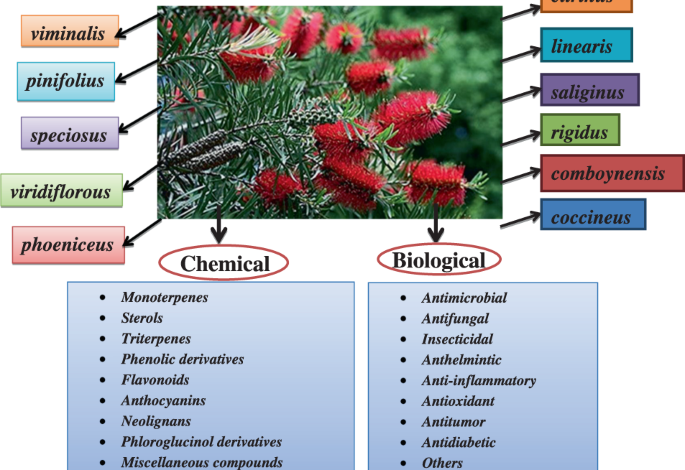
Important points when sowing Callistemon citrinus
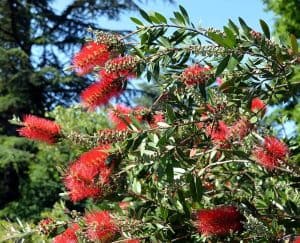 When? It is recommended to make the final sowing and planting in spring. And the transplants also come in the same season. And in autumn, when it’s soft.
When? It is recommended to make the final sowing and planting in spring. And the transplants also come in the same season. And in autumn, when it’s soft.- Where? It is grown where there is sufficient sunlight. In gardens, terraces, balconies, patios, in pots and porrones.
- How do we prepare the land? It thrives in good health on acidic, lime-free substrates with very good permeability.
- How do we sow? By seeds and by cuttings with wooden leaves, in pots. They are then transplanted to the final place.
- How do we pay? In summer, every 15 days you have to pay it withearthworm humus or compost.
- When do they bloom? In spring, itsbottle-cleaner-shaped flowers burst on the branches with a characteristic intense red of great beauty.
- Ideal temperature? It is very resistant, it supports high temperatures because it lives in full sun and mild winters, with slight frosts.
- How do we water? Although it withstands drought well, in summer it should receive more irrigation water and less in winter.
- Diseases and pests? It is affected by pests such as aphids, cottony mealybugs and red spiders, so it will have to be fumigated with specific products for each case.
Callistemon citrinus, better known as brush tree, tube cleaner, bottle cleaner or red brush, is a very unique evergreen shrub belonging to the myrtaceae family.
It comes from the Australian continent, with a great presence in New South Wales and Victoria, but its great resistance and generosity have allowed it to be cultivated in many corners of the world, where it is appreciated as an ornamental plant that provides great satisfaction.
Characteristics of Callistemon citrinus
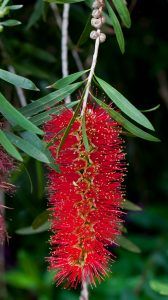 The Tree can reach a height of between 2-4 meters, with rounded foliage and boasts lanceolate, alternate and leathery leaves of a bright green, which are arranged linearly on each stem.
The Tree can reach a height of between 2-4 meters, with rounded foliage and boasts lanceolate, alternate and leathery leaves of a bright green, which are arranged linearly on each stem.
They are between 3-7 centimeters (cms) long and between 5-8 millimeters (mm) wide. Its flowers make their grand appearance in the spring, when they sprout in numerous clusters of a simply spectacular deep red color.
Each one is about 15 cm long and emulates a bottle or brush perfectly. There are varieties that have purple and lilac flower stamens. The fruit is encapsulated, about 5 cm in diameter, and clings powerfully to the branches.
Its growth does not have an accelerated rhythm, but rather slow, which is why it allows extreme care and, as its root system is not invasive, it can live in small spaces, in pots, with great ease and success.
Where should we plant it?
This showy bush is very resistant and in the garden, planted in a group, it is also sensational because it will give tremendous showiness and joy.
It can also be planted in pots, to grow it individually, both outdoors and indoors with good lighting. Which? A terrace, a balcony and any other place with full lighting.
When should Callistemon citrinus be cultivated?
Expert growers recommend planting and multiplying this beautiful shrub variety in the spring time.
How do we prepare the land?
It needs an acidic substrate to develop fully, but also permeable and free of lime.
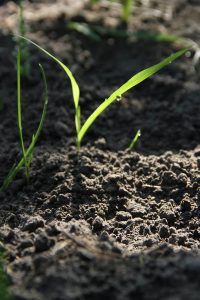 It is also recommended that this floral species be cultivated with the help of the same substrates used for rhododendrons, very fertile and well drained.
It is also recommended that this floral species be cultivated with the help of the same substrates used for rhododendrons, very fertile and well drained.
Soils rich in organic matter suit it very well. Due to its off-road resistance, the plant is able to remain even in poor soils, although the ideal is to treat it well, like a true queen of garden flowers.
Another advantageous fact is that this plant can also withstand periods of drought, but watering should still be accentuated in summer and spaced out in winter.
How to sow a Callistemon citrinus step by step?
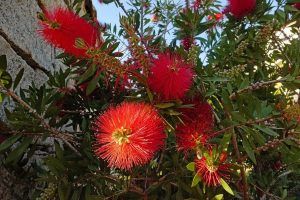 The planting of the first specimen should be done in a sunny spot in the garden, on soil previously treated with organic matter.
The planting of the first specimen should be done in a sunny spot in the garden, on soil previously treated with organic matter.
Although this plant does not demand much demand at this particular point, unless the soil has good drainage and zero lime.
Step by step, we can get two infallible methods to multiply the Bottle Cleaner or Red Brush. Let’s see.
Seeds
- In a pot of approximately 10.5 cm in diameter, a universal substrate containing between 20-30% perlite must be added, in order to guarantee ideal drainage.
- The soil must be watered immediately so that it remains as moist as possible.
- Some two and 3 seeds bought at a trusted nursery are taken and spread. You should also spread copper and sulfur on the substrate, in order to combat the appearance of fungi.
- Take the pot to the sunniest spot in the house or garden.
- Always before watering again, make sure that the substrate is dry before spraying the pot again.
- Another thin layer of substrate is watered on top and watered with support in a sprayer, giving several touches, without being soaked.
- The first shoots will start to come out in about 2-4 weeks.
cuttings
- Cut a branch of the mother plant that is about 30-40 cm long, to which we must apply the following treatment: impregnate it with a good homemade rooting agent or a good brand.
- Prepare a pot with universal substrate mixed in equal parts with vermiculite.
- Water the substrate, so that it remains well humid (do not soak) and plant the cutting, gently sinking down to half its size.
- Take the pot to a semi-shaded place.
- Constantly check the humidity level of the substrate and water when it is very dry, relying on an atomizer pot to make consecutive sprays.
- In a little over a month, the stem will have its own roots and when it becomes stronger, it will be ready to develop fully in the pot.
What care does the Callistemon citrinus need?
Lightning
Lives at ease in full sun. It needs a lot of lighting so that its photosynthesis process is carried out smoothly. In dark places and semi-shade it does not work.
Temperature
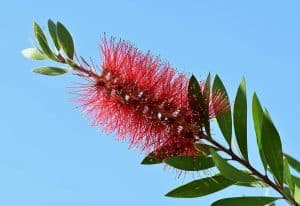 Its Australian origin makes it a very tolerant plant to high temperatures, with a tropical environment.
Its Australian origin makes it a very tolerant plant to high temperatures, with a tropical environment.
But it is also capable of tolerating slight frosts in winter, which does not mean that it should be abandoned to its fate in severe winters, because it will not be able to survive.
Its resistance should not be abused. It must always be kept well hydrated so that its leaves and roots are not damaged.
Pass
Every year, in the summer season, the plant must be fertilized with the help of compost and earthworm humus, with a frequency of every 15 days.
There are gardening specialists who recommend fertilizing this variety from spring to early fall with organic fertilizers such as guano and manure from herbivorous animals, compost, non-edible vegetables, because they contribute to intense flowering and foliage development.
Irrigation
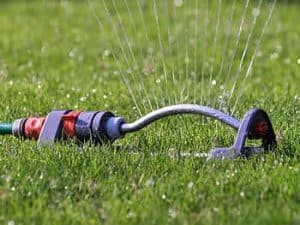 In summer, it should receive an average of irrigation water every 2-3 days and less than that the rest of the year.
In summer, it should receive an average of irrigation water every 2-3 days and less than that the rest of the year.
In a pot, it works very well to place a saucer with water under the pot, in order to keep it hydrated during the summer, the hottest time, so that the substrate can remain moist.
Pruning
A constant pruning of the protruding branches is carried out, in order to give shape to the bush. At the end of spring, it is customary to prune the inflorescences so that a beautiful and very productive flowering is achieved in the coming autumn.
You also have to remove those branches and dry leaves so they don’t steal energy from the bush.
What pests and diseases attack Callistemon citrinus?
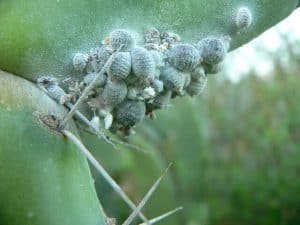 Both red spiders, aphids and cottony mealybugs are the insects that most invade this beautiful bush capable of withstanding everything, except the visit of these mites and parasites that damage leaves and stems very quickly if they are not exterminated in time.
Both red spiders, aphids and cottony mealybugs are the insects that most invade this beautiful bush capable of withstanding everything, except the visit of these mites and parasites that damage leaves and stems very quickly if they are not exterminated in time.
Red spider mites are tiny mites that feed on the cells present in the leaves of the plant. They must be fumigated with the help of specialized liquids that must be sprayed following the manufacturer’s strict instructions.
The aphid is a very persistent parasite, which also sticks to leaves and stems. They can be brown, yellow and green. They are combated with yellow sticky traps available at garden stores.
And the cottony mealybug is another fluffy-looking parasite that also seeks out the cells present in the plant’s daughters. They must be exterminated with the help of an insecticide.
How long does callistemon citrinus live?
Callistemon citrinus has a low longevity rate, being less than 50 years.
How long does callistemon citrinus take to grow?
This tree becomes an adult specimen between 6 and 8 years of life, although it is already capable of flowering from its juvenile stage.
How long does it take to produce fruit?
After 4 years, the callistemon citrinus will be able to produce flowers and fruits.
Can it be grown in a pot?
It can be worked in a pot, either in the form of a bush or as a small tree.
How many times does callistemon citrinus produce fruit?
When it is in an area with an ideal climate, it is possible that it produces fruits up to 3 times a year.
Should callistemon citrinus be pollinated to obtain fruit?
Yes. The task of pollination is carried out with the intervention of insects and birds.
How cold can callistemon citrinus tolerate?
It can live up to temperatures of -12 ° C and with frosts, as long as these are sporadic and short-lived.
How many callistemon citrinus can be planted per hectare?
More than 300 specimens can be worked in one hectare, depending on the growing conditions. However, it is not a common practice.
How much heat and/or drought can callistemon citrinus tolerate?
It has no problem tolerating high temperatures in summer, even if they exceed 35°C.
With droughts it will not suffer either, although if the heat is excessive, a refreshment will come in handy.

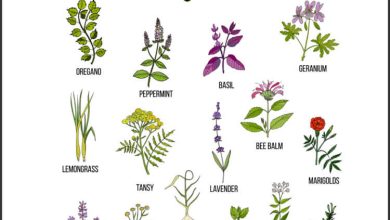
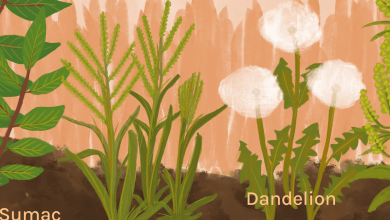
![Photo of Common Jasmine Cuttings: [Grafts, Time, Rooting and Planting]](https://www.complete-gardening.com/wp-content/uploads/2022/08/common-jasmine-cuttings-grafts-time-rooting-and-planting-390x220.jpg)
